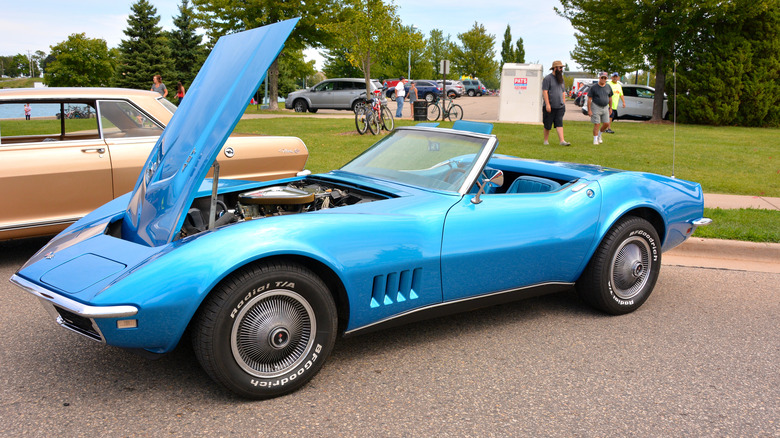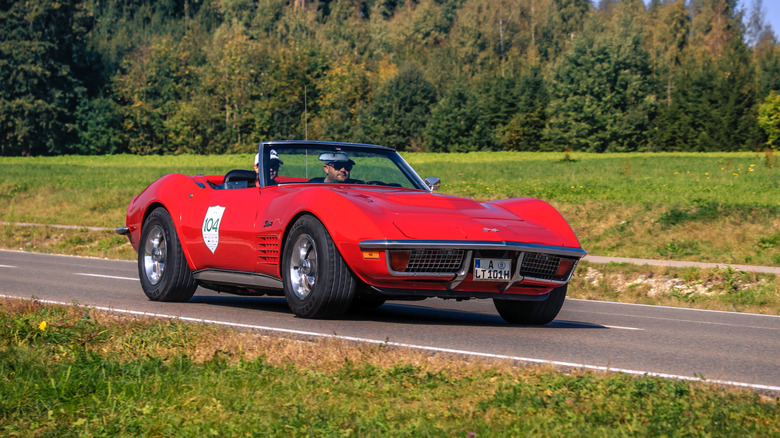Here's What Made The Chevy Corvette 454 LS6 Engine So Special
The Chevrolet Corvette first burned rubber on American streets in 1953 with a limited run of 300 units available in a single color, white. Since then, the Corvette has evolved into a 495 horsepower supercar capable of going from 0 to 60 in under three seconds and hitting a top speed of 194 mph — performance specs that would have been unfathomable to early 'Vette engineers. Over those seven decades, the Corvette has seen a series of powerful engines placed beneath its hood (and, more recently, behind the cockpit).
The first Corvettes got Chevy's "Blue Flame" inline six-cylinder engine that produced just 150 horsepower, but Chevy began using more potent V8s in Corvettes in 1955. The Vette's engines grew stronger as the muscle car era evolved throughout the 1960s. Chevy has used the LS6 designation twice for Corvette V8 engines, most recently for the 346 cubic inch motor used in Z06 models between 2001 and 2004. However, the LS6 tag had been used before, but only for a single year and for a bigger and more uniquely designed V8.
GM engineers had to deal with new federal regulations
In 1971, General Motors was still reeling from the previous year's auto worker's strike and adjusting to a newly enacted federal ban on leaded gasoline. GM President Ed Cole also mandated that all the manufacturer's cars run on 91 octane gas or lower, which hamstrung the development of new engine technology.
The 365 horsepower LS5 series 454 was carried over from the 1970 model year, and an LS6 version with aluminum cylinder heads was introduced. This was the only high-compression engine Chevy could produce under the new restrictions, and the bowtie only built 188 LS6-powered Corvettes.
The 454 cubic inch LS6 had a compression ratio of 11.25:1 and a 6500 rpm redline. It could produce 450 horsepower and 500 lb-ft of torque. It had a forged steel crankshaft, forged aluminum connecting rod, and an air injection pump, all unique features for this engine and this model year. The Corvette's hood was slightly redesigned to allow sufficient airflow around the engine, and LS6-powered models got special 454 badging.
An 850 CFM Holley four-barrel carburetor sat atop the LS6, gulping fuel between 9 and 14 MPG. While that sounds ridiculous by today's standards, gas sold for about 38 cents a gallon at the time, equaling a little less than $3 today.
While the LS6 was rare enough at 188 units, the ZR2 racing package that included a manual transmission, transistorized ignition, aluminum radiator, power brakes, and upgraded suspension was limited to a run of only 12 cars. LS6 'Vettes rarely come available for sale and usually go for around $150,000.

